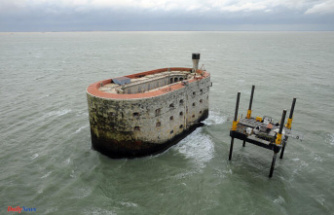Thermography makes heat loss in your own four walls visible and shows where you lose expensive heat. Winter is the best time to take pictures with a thermal imaging camera.
How is your house doing? Do you know how well insulated and isolated it is? Does it hold up expensive heating heat well - or is there still a lot of potential for savings? Thermography provides the answers.
In the process, the surface temperatures of the outer and inner walls are recorded and displayed using thermal imaging cameras. The result is colorful images that show more or less clearly where heat is lost and where the building is well insulated.
When is thermography worthwhile for my building?
The recordings can be useful if there is a suspicion that energy is leaking somewhere in the house. Signs of this are, for example, that the apartment does not get really warm during the heating period. Or it pulls all the time. The evaluation can also be useful if the consumption of heating energy is now higher than it used to be - or in comparison to the neighbors. And if mold stains form.
"Then thermal images can possibly find the cause," says Dieter Räsch from the Bavarian Chamber of Engineers in Munich. But they don't give 100% information about the energetic situation. "They show what walls, windows and roof are like. But they don't see whether the heating is good or bad."
Not every homeowner needs thermographic images to find out where energy is wasted. "Even without these thermal images, a good energy consultant knows the typical weak points in houses from certain years of construction in his area," says Reinhard Loch from the consumer advice center in North Rhine-Westphalia.
Houses built in the 1950s and 1960s often have poorly insulated roofs, exterior walls, old windows, leaky roller shutter boxes and uninsulated heating niches. "You can see them on the thermal images. But you actually know beforehand that there is a need for action," says energy consultant Loch. Nevertheless, thermographic images could also be useful in such cases. "For many owners, it is a decision-making aid to see this once illustrated. Then they tend to start renovating their house."
When are thermographic images best taken?
In the winter. Because when measuring a building, there must be a temperature difference of at least 15 degrees between the inside and outside without wind and solar radiation, according to the Federal Association for Applied Thermography. So if the indoor temperature is 20 degrees, it should only be 5 degrees outside. Only then is the heat flow high enough to be detected.
The images show a lot of red, do I have to act quickly now?
The buildings can be seen as colored surfaces in the photographs. Warmer areas are usually shown in reddish and colder areas in blue tones. The more red tones there are, the more warmth is lost, so the impression. But that doesn't have to be a reason for homeowners to panic. "The layman cannot evaluate such images alone," says Dieter Räsch from the Bavarian Chamber of Engineers for Construction. "A red coloring on the facade does not necessarily mean that there is poorer insulation. It can also simply be that this room was heated more than others." One should therefore not only commission thermal images, they must also be evaluated by a specialist.
The Federal Association for Applied Thermography points out that measurements inside and outside are necessary for serious statements about buildings, since many thermal weak points can only be localized from the inside.
If the result of the evaluation is bad, what does that mean?
If it turns out that the building envelope has weak points in terms of energy, the entire house does not have to be renovated at once. "Even individual steps can make a big difference," says civil engineer Räsch. In the ideal case, the house owner also receives a plan with sensible renovation steps for the building with the evaluation of the thermographic recordings.
"You should always start where the heat losses are greatest," advises Räsch. In most cases, this means replacing the windows first, then insulating the upper floor ceiling and finally the roof. After that, much more of the expensively generated heating heat stays in the house instead of disappearing unused.












